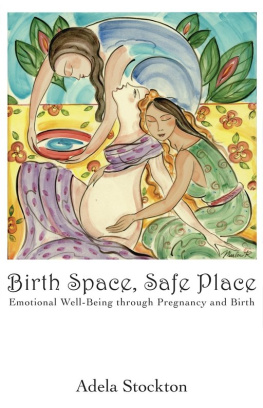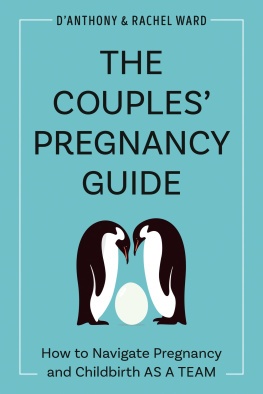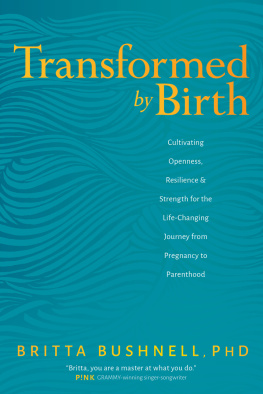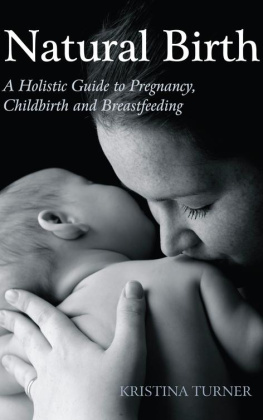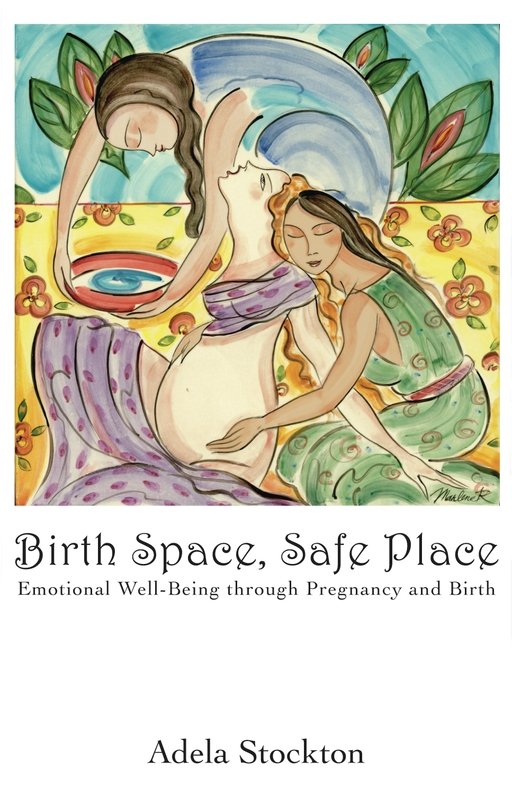My heartfelt thanks go to Nadine Edwards, Lyssa Clayton, Miranda Page and Lesley Ann Patrick for their valuable insight to my writings, also to all the mothers, fathers, midwives and doulas who shared their stories with me for this book, and to all those whose births I have been privileged to attend. Most of all I thank my daughter Marly for teaching me what gentle birth is from the inside out, and my husband Matt Baker for being so patient yet brutally honest when I needed it.
Appendix B
Relaxation exercise (approx. 20 minutes)
You might wish to record this text onto a tape or CD so that you can listen to it at any time.
Find a comfortable position in a place where you know you will not be disturbed. Whether sitting or lying, make sure all your limbs are well supported so that you can completely let go.
Close your eyes and gently become aware of your breath coming and going within your body. Which part of your body does it fill and empty? Does your chest rise up on an in-breath, or your stomach? There is no need to slow down or deepen your breathing, just take care to always breathe in through your nose, although it is fine to breathe out through your nose or your mouth. Give yourself time to become familiar with your normal pattern of breathing.
When you are ready, you can begin to gently direct your breath around your body, encouraging your whole being to relax. Start by imagining you are drawing each in-breath down into your left leg, filling it with fresh air to the tips of your toes. And then, by using your out-breath, allowing your whole limb to empty and softly let go. Repeat this process a few times on the same leg, then slowly move around each of your limbs and other body parts, one by one, doing the same thing, filling and emptying, keeping your breath in a steady rhythm.
Now, feeling your whole body gently resting, soft and relaxed, you may like to go into a space or a place in your imagination thatis special to you, somewhere that you feel safe, secure and comfortable. It may be a real place or an imaginary one, somewhere you know well or that you have only seen in a picture or a film, or read about in a book.
Take your time to cast your minds eye around to see how your special place looks and feels today. What is the light like? Are there any prominent colours or shadows? What do you sense around you?
Can you feel anything against your skin? Perhaps a warm breeze, some soft wrappings, the suns rays? Can you hear any sounds? Maybe the waves on the shore, the wind in the trees, some birdsong or music?
Do any scents fill the air? Is there anyone with you? You may be quite happy to stay there alone or you may wish to imagine a significant other, person or pet, with you there today.
Over the next few moments, take some time whatever feels right for you to focus on your tiny baby in your womb and take the opportunity to share with him or her any thoughts that you need or would like to. Enjoy this quiet time together!
When you are ready, you can begin to prepare to step out of your special place today. Bring your awareness back to your breath again and take two or three deep breaths so as to draw the energy back into your body. Once you have left your safe space, bring your focus back to where you are in actual time and space before gently stretching your body and opening your eyes, and in your own time returning to the physical world. If you are lying down, remember to roll onto your side before sitting up slowly!
You might like to share your experience with your partner and consider ways in which you could both transfer aspects of your special place to your birth environment in order to help you to feel safe and relaxed during your labour.
Appendix C
Midwifery status and regulation in US and Australia versus in the UK
- ~ Both countries have state regulated (trained, certified) midwives as well as lay (not necessarily trained, unlicensed) midwives whereas in the UK all practising midwives must be trained and registered. Each American and Australian state has its own midwifery certification body; the UK has only one regulatory body.
- ~ US Certified Nurse Midwife (hospital, pre-nurse trained)/ Australian Registered Midwife (hospital, mostly pre-nurse trained) loosely equates to a UK NHS-employed midwife (mostly hospital, minimal homebirth, no prerequisite for nurse training).
- ~ US Certified Midwife (homebirth, non-nurse trained)/ Australian Independent Midwife (homebirth/birth centre, mostly pre-nurse trained) loosely equates to a UK independent midwife (homebirth, no prerequisite for nurse training).
Endnotes and References
FRONTISPIECE
From Buddhist Offerings: 365 Days by Danielle and Olivier Fllmi , 2003. REPRINTED BY KIND PERMISSION OF THAMES & HUDSON LTD., LONDON.
INTRODUCTION
Style S , Womb to World, Resurgence Magazine: The Heat Is On , ISSUE 224 (MAY/JUNE 2004), PP. 24-26. www.resurgence.com
An edited version of this subsection was first published in Juno Magazine ISSUE 13 (WINTER 2007), PP. 42-44, as part of the article Homeopathy for the Childbirth Year.
Nursing and Midwifery Council (NMC) Free or Unassisted Birthing . www.nmc-uk.org (ACCESSED 27 AUGUST 2008)
CHAPTER 1
Thomas P , Every Womans Birth Rights (LONDON: THE WOMENS PRESS, 2002).
Houser P , Fathers-To-Be Handbook: A roadmap for the transition to fatherhood (KENT: CREATIVE LIFE SYSTEMS, 2007), PP. 85-87.
CHAPTER 2
Mauger B , Wounded Mothers , AIMS Journal VOL. 19:1 (2007), PP. 21-22.
Odent M , Primal Health: Understanding the critical period between conception and the first birthday (FOREST ROW: CLAIRVIEW BOOKS, 2002).
An edited version of this case study was first published in Juno Magazine ISSUE 13 (WINTER 2007), PP. 42-44, as part of the article Homeopathy for the Childbirth Year.
Pascali Bonaro D , Orgasmic Birth DVD, 2008. www.orgasmicbirth.com
Vernon D (Ed.), Having a Great Birth in Australia (CANBERRA CITY: AUSTRALIAN COLLEGE OF MIDWIVES, 2005).
CHAPTER 3
Karll S , Sacred Birthing: Birthing a New Humanity (VICTORIA, CANADA: TRAFFORD PUBLISHING, 2003). www.sacredbirthing.com
Kitzinger S, Birth Crisis (LONDON AND NEW YORK: ROUTLEDGE TAYLOR & FRANCIS GROUP, 2006).
CHAPTER 4
van Hoover C , Pain and Suffering in Childbirth: A look at attitudes, research and history, Midwifery Today ISSUE 55 (SEPTEMBER 2000), PP. 39-42.
Sutton J and Scott P, Understanding and Teaching Optimal Fetal Positioning , 2ND REV. ED. (NEW ZEALAND: BIRTH CONCEPTS, 1996).

